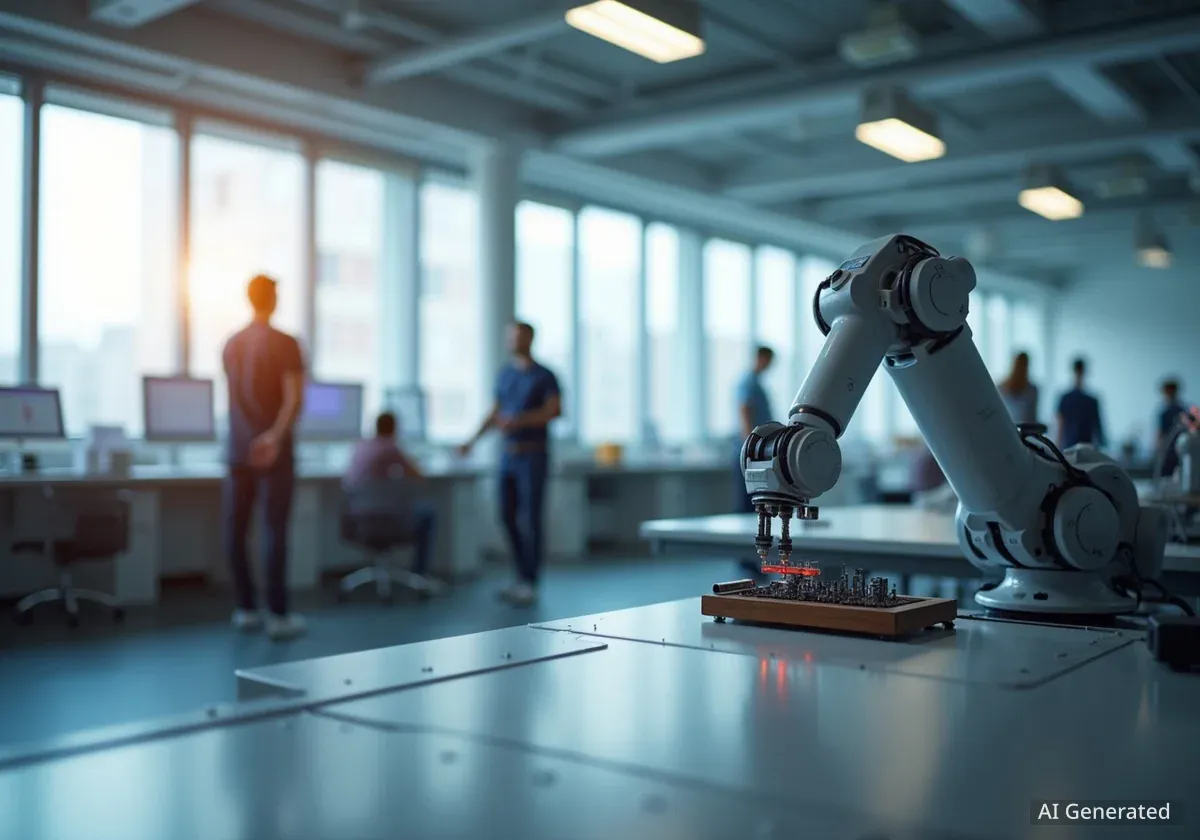Oakwood University has officially opened its new Advanced Engineering and Research Hub, a $120 million facility designed to advance studies in robotics, sustainable energy, and biomedical technology. The 200,000-square-foot building is expected to serve over 1,500 students and faculty, positioning the university as a key center for technological innovation in the region.
The project, funded through a combination of state grants, private donations, and university capital, aims to bridge the gap between academic research and industry application. University officials state the hub will foster collaboration with leading technology firms and create a pipeline of skilled graduates for the state's growing tech sector.
Key Takeaways
- Oakwood University has launched a new $120 million Advanced Engineering and Research Hub.
- The 200,000-square-foot facility focuses on robotics, sustainable energy, and biomedical technology.
- It will serve approximately 1,500 students and faculty members.
- The hub is designed to facilitate partnerships with private sector technology companies and boost the regional economy.
A New Vision for Engineering Education
The opening of the Advanced Engineering and Research Hub marks a significant step in Oakwood University's long-term strategic plan. The facility centralizes several engineering departments that were previously scattered across the campus, creating a more integrated and collaborative environment.
Dr. Annelise Thorne, Dean of the College of Engineering, emphasized the importance of this interdisciplinary approach. "By bringing our brightest minds in electrical, mechanical, and biomedical engineering under one roof, we are breaking down traditional academic silos," she explained during the opening ceremony.
"Our goal is not just to teach engineering principles, but to create a dynamic ecosystem where students and researchers can tackle complex, real-world problems from multiple perspectives. This building is the physical manifestation of that vision."
The university's leadership believes this model will better prepare students for the modern workforce, where cross-functional teams are the norm. The building's design reflects this philosophy, with open-plan laboratories and shared common areas intended to encourage spontaneous interaction and idea-sharing.
Inside the State-of-the-Art Facility
The hub is more than just a new building; it is a collection of highly specialized spaces equipped with cutting-edge technology. The university has invested heavily in equipment that rivals what is found in leading private sector research and development labs.
Funding and Construction
The $120 million project was financed through a multi-faceted approach. Approximately 40% came from state-allocated funds for STEM education, 35% from major philanthropic gifts, and the remaining 25% from the university's capital budget. Construction began in late 2021 and was completed on schedule, involving over 300 construction and trade workers.
Key Laboratory and Research Areas
The facility is organized into several distinct but interconnected zones, each dedicated to a specific area of research. These include:
- The Robotics and Autonomous Systems Lab: A 15,000-square-foot space with a high-ceiling bay for aerial drone testing and a configurable floor for ground-based robotics experiments.
- The Sustainable Energy and Grid Institute: This area features a microgrid simulator and advanced solar cell fabrication tools, allowing for research into next-generation power systems.
- The Biomedical Engineering Innovation Suite: Equipped with 3D bioprinters, advanced imaging systems, and cleanroom environments for developing new medical devices and tissue engineering techniques.
- The Materials Science and Characterization Lab: Contains electron microscopes and spectroscopic analysis tools for inventing and testing new materials with applications in aerospace and electronics.
Each lab is designed to be flexible, allowing research teams to reconfigure spaces as their projects evolve. This adaptability is seen as crucial for keeping pace with the rapid advancements in technology.
Fostering Industry and Community Collaboration
A central mission of the new hub is to strengthen ties between Oakwood University and the technology industry. The building includes dedicated space for corporate partners to establish satellite R&D offices, allowing them to work directly alongside university faculty and students.
"We are actively inviting our industry partners to be part of the daily life of this facility," said university President Michael Chen. "This is about creating a seamless pipeline from discovery to commercialization. Our students gain invaluable experience, and our partners get access to top-tier talent and research."
Economic Impact Projections
A study commissioned by the university projects that the Advanced Engineering and Research Hub will contribute an estimated $50 million annually to the regional economy within its first five years of operation through research grants, startup creation, and workforce development.
Several major tech firms have already signed partnership agreements. These collaborations will provide students with internship opportunities, sponsored senior design projects, and direct mentorship from industry professionals. The university also plans to host regular technology showcases and symposiums to connect student innovators with venture capitalists and established companies.
Enhancing Student Experience and Career Readiness
For students, the new hub offers an unparalleled learning environment. Beyond the advanced labs, the building contains numerous project rooms, collaborative study lounges, and a dedicated maker space accessible to all engineering students.
The emphasis is on hands-on learning. First-year engineering students will now have immediate access to fabrication tools like 3D printers and laser cutters, an experience previously reserved for upper-level courses. According to the university, this early exposure is designed to spark creativity and practical problem-solving skills from day one.
Fourth-year mechanical engineering student, Priya Sharma, shared her excitement. "To have access to this level of equipment is a game-changer. My senior project team is working on a new prosthetic hand design, and the bioprinters and materials lab here will allow us to create prototypes that were impossible just a year ago."
Career services will also be embedded within the hub, providing students with direct support for securing internships and full-time positions. The university anticipates that graduates from these programs will be in high demand, equipped with both the theoretical knowledge and practical skills needed to excel in the technology sector.





